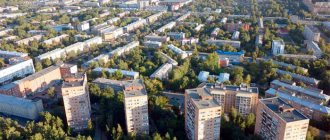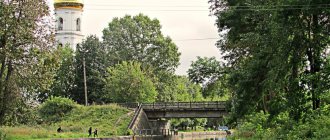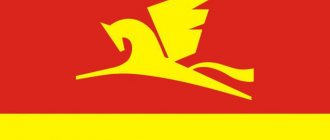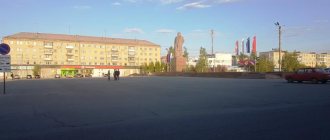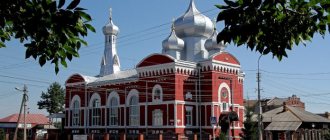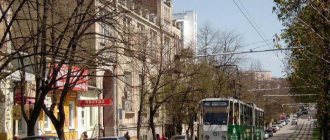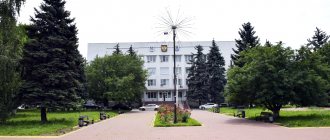How many people live in the city of Izhevsk, what is the population as of January 1, 2022, what number of people live officially, is it increasing or decreasing in municipal areas, growing or vice versa, decreasing, decreasing and where?
Statistics have always interested people and no matter what it concerns, and we are interested in it for a variety of reasons, out of curiosity and for other, very different reasons, we want to know about something, for example, about a given topic, which we will deal with below.
Izhevsk is the pride of Russian industry
The capital of the Republic of Udmurtia received the status of an urban settlement only after the October Revolution, in 1918. However, during these decades a huge leap forward was made both in terms of industrial and cultural development. The assignment of the status of a city of labor glory was a natural result of all the processes that took place here throughout the twentieth century.
The population of the city of Izhevsk is famous for its traditions in various fields of culture, science, education and, of course, for its production successes, talent, hard work and creative approach to any business. The capital of Udmurtia is a multinational city. At the same time, he is an example for all other cities and regions of our country of how Russians and Udmurts, Mordovians and Tatars, Ukrainians and Jews can get along well and cooperate fruitfully.
Izhevsk: population
According to the latest statistical reports, the quantitative indicators of the population of the city of Izhevsk have grown in recent years by about five thousand people and currently amount to about 649 thousand people.
This trend is also interesting: from 1993 to 2011, the urban population has been steadily declining, and over the past four years, the number of residents in the capital of Udmurtia has increased by about twenty thousand people. The reasons for this phenomenon will be discussed below, but here it is worth noting that people living in Izhevsk make up more than forty percent of the total population of the region. This picture, by the way, is typical for almost every subject of the Russian Federation.
Age composition of the population
The population of Izhevsk is on average younger than the country as a whole. Younger age groups account for 15.8% of the total number of residents, and older people account for 20%. There are 64.2% people of working age in the city. This may be due to low life expectancy - on average it is 64.2 years. According to this indicator, Izhevsk is in 43rd place among the regions of the Russian Federation.
Men live especially short lives - on average only 57 years. The life expectancy of women is significantly longer - up to 71 years. This means that the majority of men in Izhevsk do not live to see retirement at all. On average, per 1 thousand inhabitants, 9.3 people are born and 12.1 people die.
Sex and age structure
The population of Izhevsk can be considered as a kind of cross-section, giving an idea of the gender and age structure of the population throughout Russia. Thus, according to data at the beginning of this year, the total number of men in the city is just over forty percent, while the percentage of women is close to sixty.
The picture is not very happy if we look at the age structure of the city’s population. Despite the fact that in recent years the number of both men and women, albeit not at a very high rate, has been growing, the percentage of the working-age population in the overall structure of residents of this urban population has continued to decline. Moreover, this trend is likely to continue in the coming years. The thing is that people born in the 1950s and 1960s are gradually retiring, but very few are replacing them. This is due to the difficult situation in the country in the 1990s, when there was a real demographic crisis.
Buildings and constructions
The tallest building in the city is considered to be a business height of 70 meters, consisting of 20 floors (including 2 technical ones). A helipad is mounted on its roof on special supports. The History Museum is located in the oldest building in Izhevsk (former money storeroom), it was built in 1807. The tallest building in the capital of Udmurtia (178 meters) is the television tower on Pesochnaya Street.
The very first bridge in the city is considered to be the Long Bridge. It was built in 1839 and reconstructed in 1960. This is the most important bridge located within the city, connecting its Nagornaya and Zarechnaya parts. The Petrovsky shopping and entertainment complex is the largest in Izhevsk and Udmurtia, its area is 50 thousand square meters. m (of which 35 thousand sq. m are retail space).
The most historically significant structure for the city can be called the Factory Dam. Its commissioning took place in 1763. Initially, its length was 570 meters and its width was 27.7 meters. In subsequent years, it was repeatedly modernized and reconstructed, thanks to which the dam became wider, longer and received a road surface.
Thanks to the construction of the dam in Izhevsk, its main artificial reservoir, the Izhevsky Pond, appeared. The area of its mirror is 24 sq. km, the greatest depth is 12 m. Currently, it is used for water intake (drinking and process water) and passenger intracity shipping.
Izhevsk Population. Nationality
From the point of view of its national composition, the capital of Udmurtia is a very curious phenomenon. The thing is that, on average, by Russian standards, over a hundred nationalities are represented in the city.
This composition did not form here by chance. It reflects both the history of the region, which was literally developed by the entire multinational Russian Empire, and local characteristics. The thing is that representatives of many tribes, nationalities and nations have lived on the territory of Udmurtia since ancient times. A significant part of them has survived to this day.
If we turn to specific figures, then to the question “What is the population in Izhevsk?” you can confidently answer: “Russian!” The thing is that more than 68% of the city’s residents belong to this particular nation. By the way, approximately the same indicators were observed in the last decade of the existence of Soviet power. As for the titular nation of the republic, the Udmurts confidently occupy second place with fifteen percent.
If we talk about other large nationalities represented in Izhevsk, then the top five, in addition to those already mentioned above, also include Tatars, Ukrainians and Azerbaijanis. However, the number of the latter no longer exceeds 0.3%.
The small nationalities whose representatives live in the hospitable capital of Udmurtia include Chechens, Bessermyans and Greeks. Their number does not exceed 150 people.
City `s history
The earliest settlements on the site of modern Izhevsk arose in the 3-5 centuries AD. They were wooden buildings with log walls, ditches and ramparts, and nearby there were cliffs that served as a natural obstacle for enemies. Archaeologists also discovered the Izhevsk burial ground (now there is a Palace of Children's Creativity). The burials date back to the 4th-5th centuries.
For a long time, Izhevsk was under the control of the Tatars. In the early 1700s, large deposits of iron ore were discovered in the city area. As a result, many factories were built to process it. Later the city became famous for the production of iron weapons, both military and civilian.
Main denominations
Izhevsk, whose population is not only multinational, but also multi-religious, is one of the most striking examples of religious tolerance in Russia.
The largest religious community in the city is the Orthodox, and in Izhevsk itself the residence of the Metropolitan of Izhevsk and Udmurt has long been located, whose place is currently occupied by Metropolitan Nikolai.
The second largest community is Muslims. The first mosque appeared in the city during the times of the empire. Currently, there are three similar institutions operating here, in addition, the Regional Spiritual Administration of Muslims conducts educational activities in the city.
In addition to the two main ones, representatives of such religious movements as Buddhists, Protestants, Old Believers, and Mormons operate quite successfully in Izhevsk.
Migration and its impact on the population in Izhevsk
Internal and external migration has a significant impact on the demographic and national picture of Izhevsk. Starting from Soviet times, mostly young people came to the capital of Udmurtia for the “long ruble”, hoping to get a good job at the industrial enterprises of the city. As for internal movements, here Izhevsk looked very attractive in the eyes of residents of small rural settlements, and even other cities. Many people pinned their hopes on career growth and a decent salary on the capital of the region.
Currently the situation looks almost identical. Izhevsk, whose population has been declining for almost twenty years in a row, has managed to retain its status as one of the largest cities in Russia, largely thanks to the constant influx of migrants.
According to the statistical department of the republic, the annual migration increase over the past five years is about 1,300 people. The main contingent of visitors comes here from Udmurtia itself, as well as Tatarstan, Bashkiria, the neighboring Kirov region and even from Moscow and St. Petersburg. Mostly young people under the age of 30 are coming, but mostly people “over forty” are leaving here.
Economy of the region and the city of Izhevsk
It is believed that Udmurtia has the largest concentration of enterprises in the military-industrial complex. Industry and diversified agricultural production are developed in the republic. The region also has oil reserves, which are being extracted and processed. There is a powerful energy complex, consisting mainly of thermal power plants. In the north and west of the republic, logging is carried out; there are enterprises for wood processing, production of furniture and house-building structures. A nuclear industry enterprise is located in Glazov.
Izhevsk itself is known for its developed mechanical engineering and the production of high-quality steel. The city produces weapons and military equipment, small arms (hunting and rifled weapons), instrument making and the food processing industry. Industry employs 31.7% of the city's working population. The city has a low unemployment rate; at the beginning of 2015 it was 0.71%. There are branches of federal-level banks here, and there are foreign financial institutions.
The city's retail network consists of 2,300 retail outlets, 438 catering establishments and four markets. The leading positions are occupied by large chain stores of federal-level companies (Lenta, Auchan, Eldorado, etc.). There are 31 socially oriented trading enterprises. There are 21 fairs for the sale of agricultural products on an ongoing basis. Online stores are actively operating in the city market, offering a full range of consumer goods. The hotel business is well developed (52 hotels).
Izhevsk is considered a major transport hub, located at the intersection of air, rail and road routes. Buses, trolleybuses, and trams run around the city. There is an intra-city water bus.
Factors that positively influence the demographic situation in Izhevsk
As mentioned above, the population of the city of Izhevsk has been steadily growing in the last four cities. This growth, of course, is not as impressive as that observed in the second half of the 1980s, but after constant negative indicators for 20 years since 1993, this trend looks very encouraging. The main factors that influenced such a drastic change in the situation are as follows.
Firstly, there is a significant increase in the birth rate. It is connected both with natural processes (the generation of the 80s began to give birth) and with the efforts of the state (maternity capital, regional housing programs for young families).
Secondly, the number of people entering the city constantly exceeds the number of residents leaving it.
Finally, thirdly, the economic stability that established in the region in the 2000s also played an important role in the positive dynamics of population growth.
Attractions
For those who are still thinking of spending a holiday in this city, there is not much to see. Izhevsk is a city of industrialists, and they mainly produced weapons here. Therefore, the sights are dedicated specifically to this craft. The city has 2 weapons museums, one of which is dedicated to Kalashnikov weapons. There is also a fine arts museum. In addition, there are 4 archaeological sites and 166 architectural objects. In general, this city is not very attractive for recreation and tourism.
Thus, despite the generally positive population dynamics, the demographic situation and quality of life of the population cannot be considered satisfactory.
Negative trends
Despite the generally positive dynamics of recent years, a number of points regarding changes in the population in the capital of Udmurtia look very alarming. This primarily concerns the slowdown in growth rates over the past two years. The main reason for this seems to be a gradual decrease in the number of women of fertile age. Subsequently, it seems very likely that the mortality rate will again exceed the birth rate, since the generation of the 1990s is very much inferior in quantitative terms to the generation of the 80s.
Secondly, Izhevsk, whose population remains extremely unstable, continues to be a city with an extremely high mortality rate. Particularly alarming is the fact that predominantly people of working age die. This negatively affects both the city’s human resources potential and its demographic prospects.
Finally, thirdly, the population of Izhevsk, like any city in Russia, is directly dependent on the economic state of the region and Russia as a whole. The crisis phenomena that have emerged in recent years clearly do not encourage young families to strive to have a second and subsequent children.
Cost of new buildings
Depending on the area, number of storeys, material and class of construction, the cost on the primary market of Izhevsk ranges from 50 to 60 thousand rubles per square meter.
Let's consider the average sale price depending on the number of rooms
- A one-room apartment will cost residents of Izhevsk around 2,296,634 rubles;
- A two-room apartment can be found for RUB 3,274,192;
- The cost of a three-room apartment ranges from 4,664,424 rubles.
Since most of the residential real estate put into operation belongs to the economy class, we bring to your attention the average market prices for the city districts. For convenience, we will arrange the areas in ascending order of price per square meter in a new building:
- Leninsky District offers apartments with an average price of 50 thousand rubles per square meter. The cheapness is due to the presence of a large number of industrial enterprises.
- Pervomaisky district is filled with housing costing from 55 thousand rubles per 1 m2. This price order can be found in all six residential neighborhoods.
- Ustinovsky district is a densely populated area. Its territory is the smallest in area among all the districts. Despite the dense development and the smallest amount of green territory, the average cost per square meter in a new building does not fall below 56 thousand rubles.
- The Industrial District finishes with the highest price in January for 1 m2 at 58 thousand rubles
Ways to solve the problem
Naturally, there is no single solution to the problems associated with the deteriorating demographic situation, but in the conditions of Izhevsk you can take advantage of the following points.
Firstly, local authorities should focus on ideological propaganda of family values and the enormous role of motherhood in the formation of every person.
Secondly, it is necessary to improve the healthcare system, since the gradual aging of the population will inevitably lead to an increase in visits to doctors.
Thirdly, Izhevsk, whose population in Soviet times was distinguished by high scientific and industrial potential, should strive to attract people with high educational potential. The basis for this should be an increase in the level of educational services.
